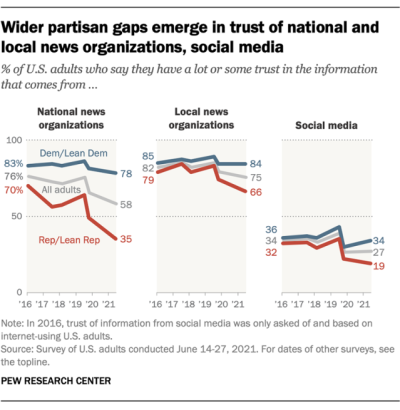
Photo (cc) 2020 by deckerme
We were on our way back from a family gathering in upstate New York when we learned that President Biden had stepped aside from his re-election campaign and endorsed Vice President Kamala Harris. I was checking social media at the Lee rest stop on the Mass Pike eastbound; I think I was about an hour behind. We’d been anticipating the moment for days, if not weeks. Still, it came as a surprise.
I’m hearing some people grouse that Biden should have acted sooner, but this had to be incredibly difficult. No doubt he believes he can still do the job. What he couldn’t do was govern and campaign simultaneously. Nor was it reasonable to expect voters to believe he could serve more than a fraction of a second term. He’s now given us the best chance of beating Donald Trump and the authoritarian menace he represents.
Harris is an accomplished leader who, after all, is already the elected vice president. Opening up the process to some sort of vague celebrity bakeoff could have led to disaster. Can Harris win? I don’t know. Every possible choice was a risk, but I think giving her a chance of claiming the nomination quickly is less of a risk than continuing with Biden or having an open convention. (To be clear: It will still be an open convention.)
There’s one important media angle to all this that I think needs to be addressed. It really looks like Biden was driven out of the campaign by the press, and that’s not a good perception. There have been stories over the past year or two suggesting that Biden shouldn’t run for re-election because of his advanced age, the three most notable being a Mark Leibovich piece in The Atlantic in 2022, an Ezra Klein commentary in The New York Times this past February, and a Wall Street Journal article in early June. But Biden’s age-related problems have been a 24/7 obsession since about 9:10 p.m. on June 27, when it became clear in the presidential debate that something was seriously wrong.
Many diehard Biden supporters have erupted in fury at the media, and especially the Times, for publishing story after story after story about Biden’s infirmities while not dwelling nearly as much on Trump’s far worse deficits. There are many on the left who’ve come to the conclusion that the corporate media — I’m not using quotation marks because there really is a corporate media — want to see Trump back in office for ratings and circulation. I don’t think that’s the case. Biden’s age, questions about his cognitive health, and fading electoral prospects were a huge and entirely legitimate story. But that doesn’t mean the media covered themselves in glory.
My own belief is that the media — again, led by the Times — were shocked and horrified by the prospect of Trump’s return to the White House, so they embarked on an overwrought effort to bring Biden’s campaign to a close. The Times put it this way in an editorial today: “Had he remained at the top of the ticket, he would have greatly increased the likelihood of Mr. Trump retaking the presidency and potentially controlling both houses of Congress as well.” That’s not just a statement of truth; it’s also an explanation for the media behavior we’ve seen over the past three weeks.
Jon Keller of WBZ-TV asked me the other day if this was evidence of “bias.” I responded that yes, I suppose it was. But it was bias in favor of democracy, something that media observers such as Margaret Sullivan and Jay Rosen have been calling for from the start of the campaign. This is not Bill Clinton versus Bob Dole in 1996. Trump represents an existential threat to democracy.
Still, the media excesses were notable, especially a Times report that a physician who specializes in Parkinson’s disease had visited the White House repeatedly. That was just irresponsible journalism. It didn’t pan out, and no evidence has emerged that Biden has Parkinson’s. Another example of excess was published by The New Yorker last week, in which nine physicians were allowed to speculate anonymously about the state of Biden’s neurological health. Now, I have to say that the story was interesting and possibly shed some light. But that doesn’t mean it should have been published.
President Biden said he will address the nation later this week. He could do Harris a lot of good if he acknowledges that he’s leaving not because of the media, not because fundraising had dried up, not because Nancy Pelosi told him to, but because his age and his health had finally caught up with him. And the media should ask themselves how they once again managed to turn a legitimate story into the only story for the past three weeks, embarrassing themselves and calling their judgment and fairness into question.
Biden has been an outstanding president, and he cements his legacy by knowing when it’s time to leave. He deserves our respect and gratitude. We are all going to miss his steady hand come next January, regardless of who succeeds him.









Two Alden papers, the Boston Herald and The Denver Post, will end commenting
By Dan Kennedy
On June 27, 2023
In Media
Royalty-free photo via Wallpaper Flare
At least two daily newspapers owned by Alden Global Capital’s MediaNews Group will end reader comments on July 1.
The Boston Herald announced the move earlier today, saying that the change was being made to “dramatically speed up the performance of the website” as well as on its mobile platforms. The Denver Post took the same action last week, although editor Lee Ann Colacioppo cited bad behavior rather than technology, writing that the comment section has become “an uncivil place that drives readers away and opens those trying to engage in thoughtful conversation to hateful, personal attacks.”
Both papers emphasized that readers will still be able to talk back at them through social media platforms.
Wondering if this were a MediaNews-wide action, I tried searching about a half-dozen papers in the 60-daily chain and could find no similar announcements. I found something else interesting as well. The eight larger dailies that comprise the Tribune Publishing chain, which Alden acquired a couple of years ago, are now included as part of MediaNews Group, although they are still listed separately as well. (A ninth, the Daily News of New York, was split off from Tribune and is being run as a separate entity.)
The moves by the Herald and the Post represent just the latest in the long, sad story of user comments. When they debuted about a quarter-century ago, they were hailed as a way of involving the audience — the “former audience,” as Dan Gillmor and Jay Rosen put it. The hope was that comments could even advance stories.
It turned out that comments were embraced mainly by the most sociopathic elements. Some publishers (including me for a while) required real names, but that didn’t really help. The only measure that ensures a civil platform is pre-screening — a comment doesn’t appear online until someone has read it and approved it. But that takes resources, and very few news organizations are willing to make the investment.
The best comments section I know of belongs to the New Haven Independent, where pre-screening has been the rule right from the start. Keeping out racist, homophobic hate speech opens up the forum for other voices to be heard. The New York Times engages in pre-screening as well.
So kudos to the Boston Herald and The Denver Post — and I hope other news outlets, including The Boston Globe, will follow suit.